In 1976, the young Canadian Dennis T. Lanigan, in London briefly as part of his medical training, visited the major Edward Burne-Jones retrospective at the Hayward Gallery. What had been a fledgling interest developed into a more serious passion for the Pre-Raphaelite artists and those associated with the Aesthetic Movement. As his career as a leading oral and maxillofacial surgeon progressed, Lanigan began to collect drawings, moving from a handful of preparatory studies to acquire a whole range of sheets – from rapid sketches to designs for stained glass. Together these works by over 60 artists, including major figures such as Rossetti and Watts to lesser-known masters like Albert Moore or Henry Holiday, make up one of North America’s most significant private collections of British art of the Victorian period.
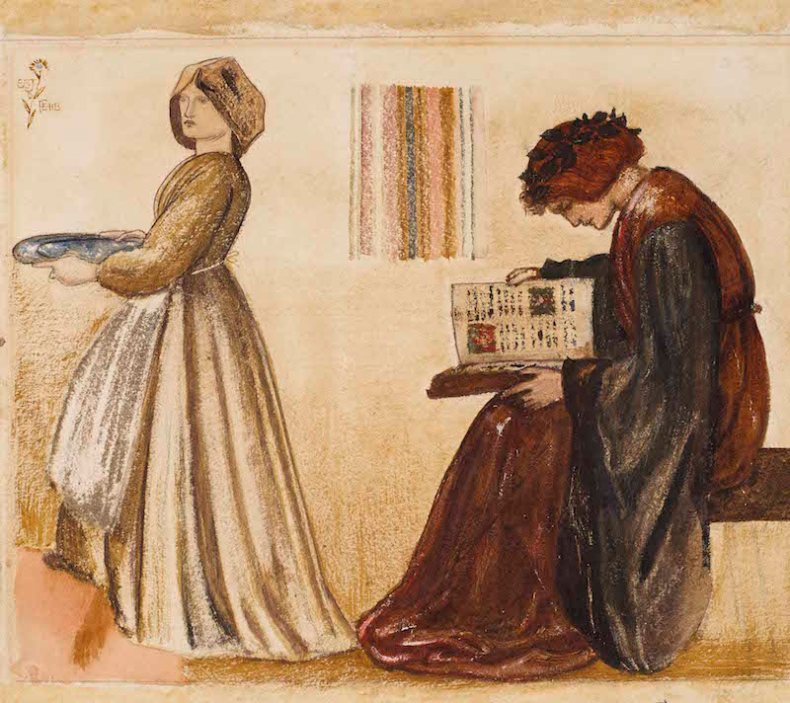
‘Study for The Wedding Feast of Sir Degrevaunt’ (for William Morris Red House), 1860, Edward Burne-Jones. ® NGC
Such works reflect the resurgent interest in drawing among British artists in the later half of the 19th century. Chief advocate among them was Lord Leighton, President of the Royal Academy, whose fluidly sketched, sculptural studies of Iphigenia for his painting Cymon and Iphigenia are one of the highlights of this show. Over 700 drawings of his are preserved at Leighton House.
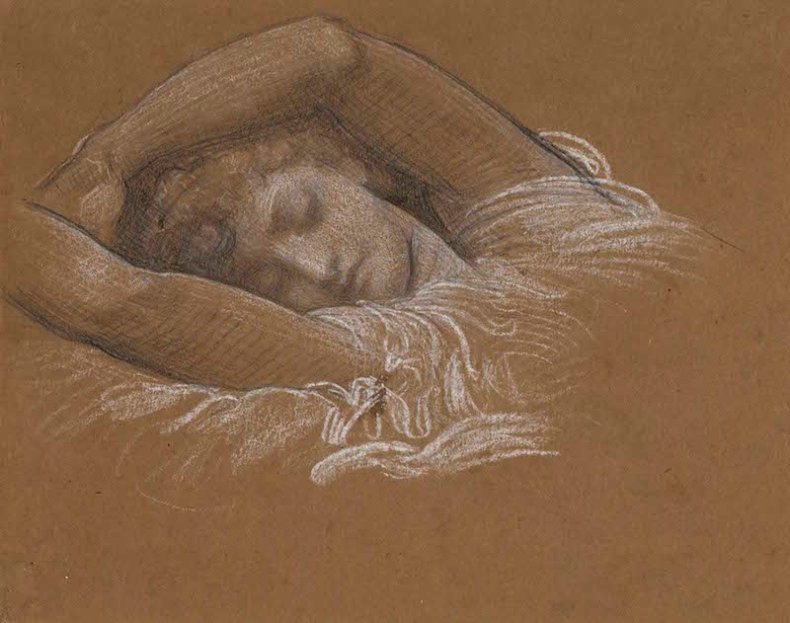
‘Study of Iphigenia for Cymon and Iphigenia’, 1883, Frederic Leighton. Promised Gift from the Lanigan Collection – ® NGC
This exhibition, to celebrate Dr Lanigan’s latest pledge of over 80 drawings to the National Gallery of Canada, Ottawa, is therefore a kind of homecoming. Many of the artists represented in Lanigan’s collection – including Millais, Alma-Tadema and Watts – were frequent visitors to the house. And while Leighton House was conceived as a showcase for Leighton’s own art collection, in all its recently renovated glory it provides a sumptuous period backdrop for Lanigan’s masterpieces. With no labels allowed on the delicate walls, and Lanigan’s exceptional finds hung thematically throughout the house, you can almost imagine yourself on a private visit to view Leighton’s latest treasures.
As it happens, the first room, the Drawing Room, puts paid to that romantic notion by including two works on paper by Walter Crane from the National Gallery of Canada’s own collection. These are dated 1899, three years after Lord Leighton’s death. However, the themes that these delicately painted costume designs explore are ones that resonated throughout the second half of the 19th century – and are fully reflected here. In one work, two classically draped female figures represent Freedom and Commerce, one winged, one bearing the caduceus – preeminent presiders over late Victorian prosperity; in the other, the knight Trueheart is shown in full medieval armour. Both costumes were designed for Crane’s medievalising masque, Beauty’s Awakening, performed by the Art Workers’ Guild – a last gasp for the iconography of belle dames, steadfast knights and holy grails which so gripped the Victorian imagination.
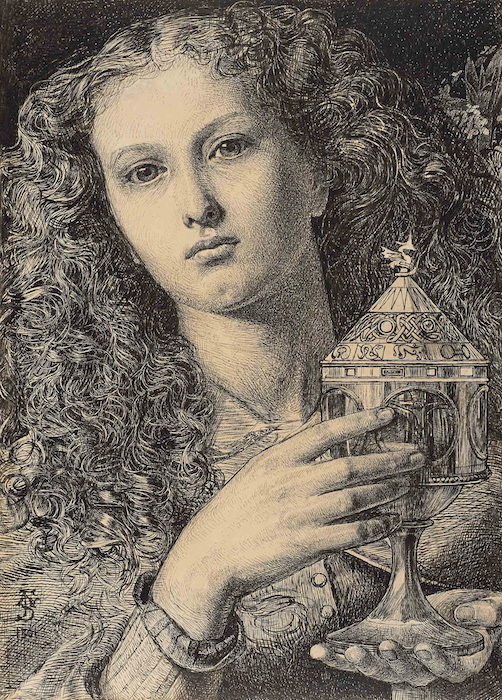
‘King Pelles’ Daughter Bearing the Vessel of the Sangreal’, 1861, Frederick Sandys. Promised Gift from the Lanigan Collection – ® NGC
Alongside hangs one of the finest drawing in the whole collection, Frederick Sandys’ highly finished pen and ink drawing of King Pelles’ Daughter Bearing the Vessel of the Sanc Graal (1861), the height of Pre-Raphaelite courtly dreaming. Nearby, William Holman Hunt’s medievalising ‘outline’ study for his seminal narrative painting, The Flight of Madeline and Porphyro, a scene from Keats’ Eve of St Agnes, takes us back to 1848, the founding moment of the Pre-Raphaelite Brotherhood. Joseph Noel Paton’s similarly linear, dramatic illustration of Nobles Gathering at the Deathbed of the Scottish King, Robert the Bruce (1863), and John Gilbert’s soft, pained Cordelia, an illustration to Shakespeare’s King Lear (1857), demonstrate the literary influences at play in this phase of Victorian art.
The Dining Room offers drawings examining biblical themes, including Henry Holiday’s erotically charged Samson and Delilah (c. 1859–61), with its atmospheric light and shade, and James Smetham’s intense watercolour and gouache, Saul Hiding (1866).
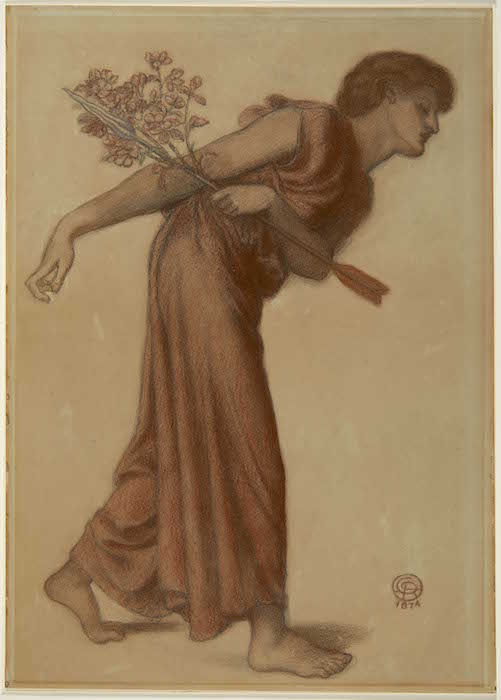
‘Study of the Figure of Love for Dante Dream at the Time of the Death of Beatrice’, 1874, Dante Gabriel Rossetti. the Vessel of the Sangreal, 1861. Promised Gift from the Lanigan Collection – ® NGC
Upstairs hang drawings dated to after 1860, reflecting the return to antiquity as a source of both style and subject matter. These include not just G.F. Watts’ impressively large, romantic Study of the Figure of Death for Time, Death and Judgement (1878–86), a glowing work in red and white chalks, and several fine drawings by Leighton, but also Albert Moore’s beautifully handled Female Head in Profile, Looking Downward. There are other treasures in Leighton’s Bedroom and Dressing Room, including Rossetti’s clear, deftly modelled Study for the Figure of Love, for Dante’s Dream at the Time of the Death of Beatrice (1874), which harks back to the Italian primitives; and a very fine metalpoint drawing with sensitive Leonardoesque modelling, of two Female Heads (1889), by the accomplished French-born draughtsman Alphonse Legros, Professor of Fine Art at the Slade between 1876–93. This is a collection of astonishing depth and breadth, gathered with passion and perseverance. There could not be a more appropriate context for its first UK public display.
‘Pre-Raphaelites on Paper. Victorian Drawings from the Lanigan Collection’ is at Leighton House until 29 May.
Unlimited access from just $16 every 3 months
Subscribe to get unlimited and exclusive access to the top art stories, interviews and exhibition reviews.




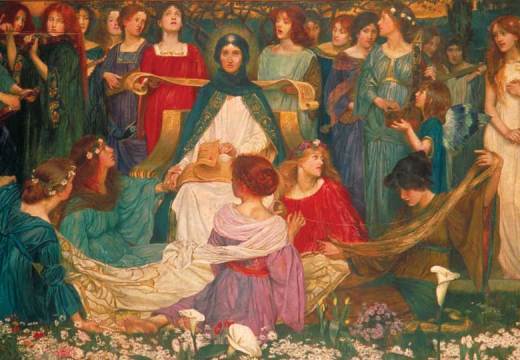
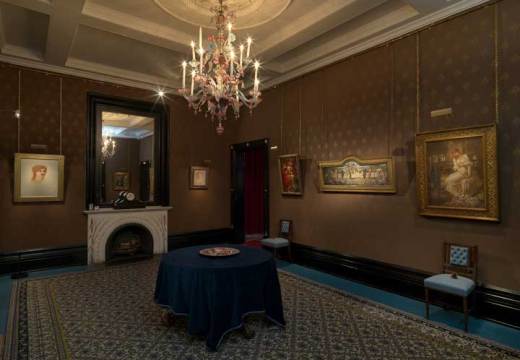
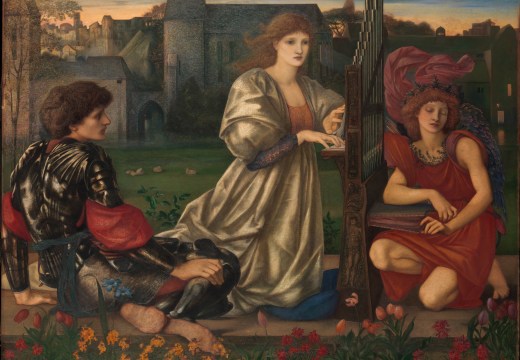









![Masterpiece [Re]discovery 2022. Photo: Ben Fisher Photography, courtesy of Masterpiece London](http://www.apollo-magazine.com/wp-content/uploads/2022/07/MPL2022_4263.jpg)
It’s time for the government of London to return to its rightful home